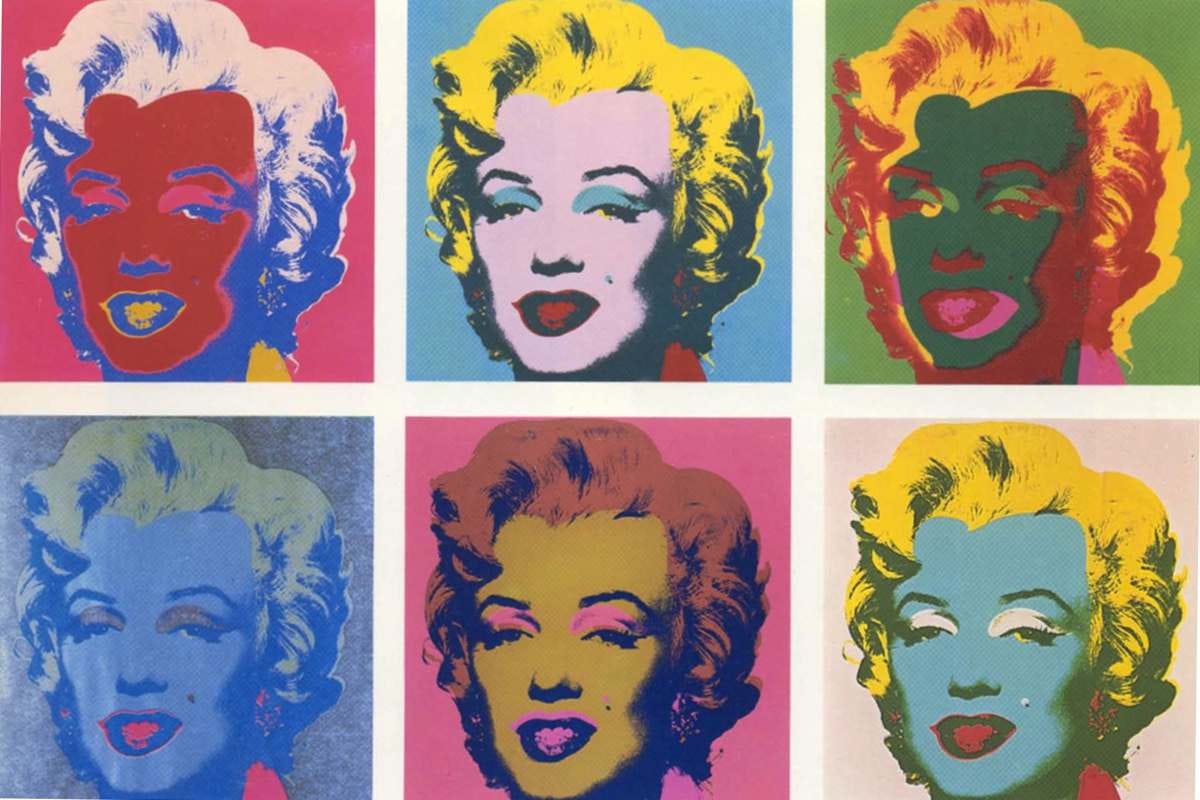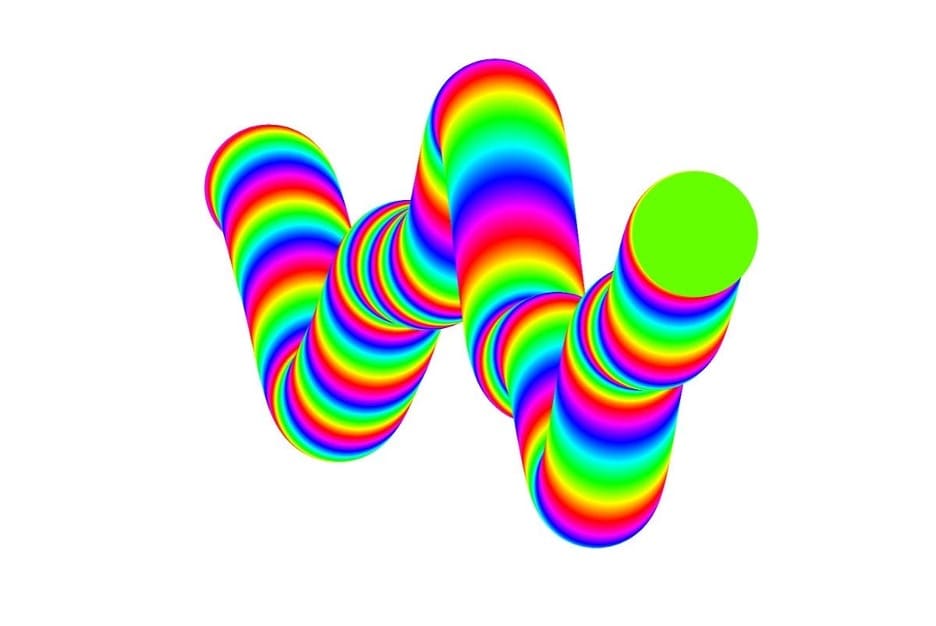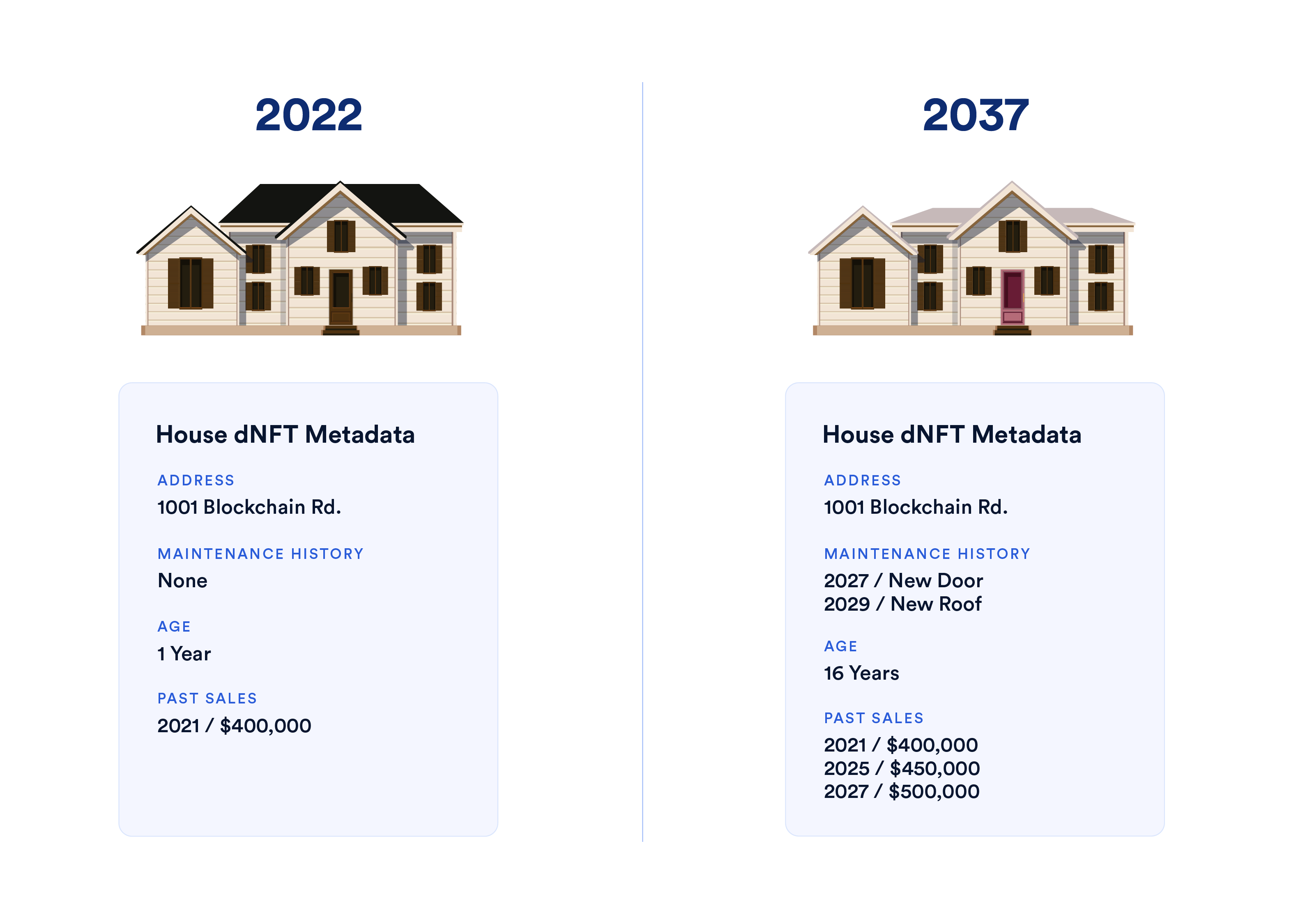Dynamic NFTs are the key to unlocking the full potential of Web3. Unlike traditional tokens, dynamic NFTs or “dNFTs” change over time based on external conditions. This ability has created many compelling new use cases for digital assets and is changing the way we think about NFT technology.
Dynamic NFTs are “living” tokens. They respond to outside triggers such as price fluctuations, user behavior, time, weather, etc. These moving data points can be used to update the metadata of dNFTs, thereby allowing them to transform over time to evolve along with the world around them.
Imagine, for instance, an NFT that represents a social media account. With dNFTs, this NFT could change color, gain some kind of flair, or take on some other characteristic to show your ranking on the social media app as evidenced by likes, reposts, comments, etc. This “ranking” could then theoretically unlock token-gated dAPPs, websites, or digital experiences reserved for popular influencers.
Alternatively, this ranked-up dNFT could also be sold at a premium price versus an unranked version. Through NFT marketplaces, buyers and sellers would be able to trade these accounts with much greater fluidity than previously possible.
This possibility is just one application, however. In order to fully understand the potential of dNFTs, one must first know how they work. Furthermore, how does Chainlink’s oracle technology help dynamic NFTs function? How do people even make dynamic NFTs? And overall, what are dynamic NFTs and how do dNFTs differ from traditional NFTs?
By reading this guide, you will gain an understanding of how dNFTs are already changing how we view and utilize NFTs. More importantly, we’ll also take a look at how dNFTs will have an even greater impact on our future.
Image Credit: Analytics Insight
What is a Dynamic NFT?
Dynamic NFTs are a subcategory of NFTs encoded with editable smart contract logic. This feature allows them to change their metadata based on outside events. As a result of the metadata changing, the token itself changes too. This utility opens up an entire world of possible use cases that were previously impossible with traditional NFTs.

Image Credit: Shaan Ray
How do dNFTs Work?
Like normal NFTs, dNFTS use blockchain technology to establish verifiable and immutable records of ownership and authenticity. When someone creates a dNFT, they set rules for how the NFT can change and which outside events to track. These rules are stored in the code itself.
Dynamic NFTs transform through the use of smart contracts. Smart contracts are self-executing programs that automate certain functions. They can be used to alter the appearance or behavior of a dNFT depending on information received from an outside oracle.
Oracles are hybrid smart contracts that connect blockchains to external systems. This connection allows an oracle’s smart contract to execute based on real-world data. These oracles are the key to letting Web3 dApps and protocols interact with legacy technology.
Oracles function by taking information from real-world APIs and then sending it to smart contracts. The smart contract then executes its programming and changes the dNFT’s metadata. By changing the token’s metadata, its characteristics and appearance are updated.
In summary, dNFTs use oracles to take in data from outside sources. Then, the oracle interprets the data and dictates changes to the dNFT’s metadata. Finally, the dNFT changes its appearance or behavior to align with the new information.

Image Credit: Chainlink
What’s the Difference Between Traditional and Dynamic NFTs?
Traditional NFTs are static and cannot change once minted. Dynamic NFTs, on the other hand, are programmed to transform based on outside inputs.
The differences between traditional NFTs and dynamic NFTs lend themselves to different use cases. Traditional NFTs are better suited for situations in which the user would prefer the asset doesn’t change. This immutability offers increased security and peace of mind– there’s no chance of a traditional NFT changing after purchase.
This approach would be preferable for something like an alien CryptoPunk. A buyer would want the NFT based on its rarity and provenance, and definitely would not want it to change at all.

Dynamic NFTs are a much better choice for more interactive projects. Using dNFTs for gaming, for example, would allow players to update characters after completing challenges. Basically, any scenario that would benefit from increased interactivity and flexibility would lend itself well to dNFTs.
Examples of Dynamic NFTs
Even though Dynamic NFTs are somewhat new, there have already been many projects that utilize the technology.
ArtBlocks
Artblocks is a Web3 platform for generative art. Projects on Artblocks use dynamic NFTs to create generative pieces that exist at the intersection of computer programming and art. Many of these NFTs change over time, relying on dynamic NFTs to make these transformations possible.

Image Credit: Artblocks
Async Art
Like Artblocks, Async Art is a platform that helps artists to create and collectors acquire programmable art pieces. These items adjust themselves based on outside conditions through the usage of dynamic NFTs. This ability allows creators to create unique on-chain experiences for collectors.
Moonbirds
Moonbirds has integrated dynamic NFTs into its 10k PFP project. Holders can stake their Moonbirds in a process called “nesting”. By doing so, they attain different rankings that unlock rewards depending on how long they’ve been staked. The NFTs themselves also show different backgrounds depending on different things such as how long they’ve been staked for, whether or not the owner also holds a Proof Pass, etc.
LaMelo Ball NFTs
NBA star LaMelo Ball collaborated with Chainlink to release an innovative NFT collection based on dynamic NFT technology. The collection features eight different NFT types, each version representing a specific statistic (points, rebounds, assists, etc). Holders of the NFTs received access to raffles and other perks depending on Ball’s on-court performance.
One type of LaMelo Ball NFT, The Gold Evolve NFT, promised to evolve into a new image if LaMelo won the Rookie of the Year award. The Charlotte Hornets player did in fact win the award, and as a result, the NFT transformed into a different image. To date, LaMelo Ball’s NFT collections are one of the greatest examples of what’s possible when we start linking dynamic NFT technology to the world of digital collectibles.
Beeple’s ‘Crossroad’
Beeple, otherwise known as Mike Winkleman, help lead the early adoption of dynamic NFTs. The “Everydays” digital artist created a piece called, “Crossroad” featuring Donald Trump. The piece was going to either show a triumphant Donald Trump or a defeated Donald Trump based on the outcome of the 2020 Presidential election.
As we all know, Trump lost the election. The NFT updated itself automatically to show an image of the former President strewn on the ground with “loser” graffitied on his naked body and a clown emoji floating over his body. The piece was so popular that it sold on Nifty Gateway for $6.6m.

Image Credit: Duckie Land
dNFTs Use Cases
Dynamic NFTs can be used for much more than artwork, however. In fact, the vast majority of dNFTs will likely have nothing to do with art.
Dynamic NFTs and Gaming
Gaming is perhaps the most obvious application for dynamic NFTs. For a long time, people have looked to NFTs as a way to give gamers the ability to own hard-earned in-game assets without interference from a centralized authority. Vitalik Buterin himself famously created Ethereum in response to Blizzard Entertainment nerfing his favorite World of Warcraft character. This experience prompted him to create Ethereum to allow for greater decentralized ownership of digital assets.
With Dynamic NFTs, gamers will be able to own NFTs that represent their characters and items. As these assets level up, their corresponding NFTs will also evolve to match in-game performance. These items will be owned in individual owners’ wallets outside the control of game publishers. If a game company goes out of business, for example, the NFT will remain in a player’s wallet as well as any game progress or achievements associated with it.
Tokenization of Real-World Assets
Real-world assets such as real estate will also be disrupted by dNFTs. Traditional property deeds, for example, may someday be replaced by dNFTs. When a property switches ownership, a dNFT will update itself to account for the change.
Likewise, dNFTs can be used to represent homes themselves. The NFT can be updated when the property owner completes a major repair or upgrade. By doing so, we can create an easy solution to maintain property records that are guaranteed to be accurate, transparent, and accessible.

Image Credit: Chainlink
NFT Fundraising
Dynamic NFTs are also having an impact on fundraising. Regenerative Resources is an ecosystem services company using dNFTs to help plant 100 million mangroves. The organization produced the Five Short Film NFTs collection to fund this initiative. These NFTs reveal one frame of a short film every time one is bought or sold. This clever usage of dNFTs is a great example of how this new blockchain technology is already improving our world.
How to Make Dynamic NFTs?
Here are the steps to creating a dynamic NFT:
- Set up the token using an ERC-721 or ERC-1155 standard
- Upload the NFT image links in the IPFS URIs
- Complete a compile check
- Make the NFT contract “Keepers Compatible”
- Code the smart contract to change the NFT based on an external data point (market prices, weather, temperature, etc).
- Test your dNFT
- Mint and deploy your dNFTs
The Future is Dynamic
We are just scratching the surface of what’s possible with dynamic NFTs. The power to connect with the outside world will unlock massive potential and bridge Web3 to everything that came before it. In all likelihood, dynamic NFTs will be so omnipresent in our daily lives that we won’t even think about them as NFTs anymore.
As this trend continues, dynamic NFTs will become fixutres in our daily lives and prove just how important blockchain is to our future.
The post A Guide to Dynamic NFTs appeared first on NFT Evening.
